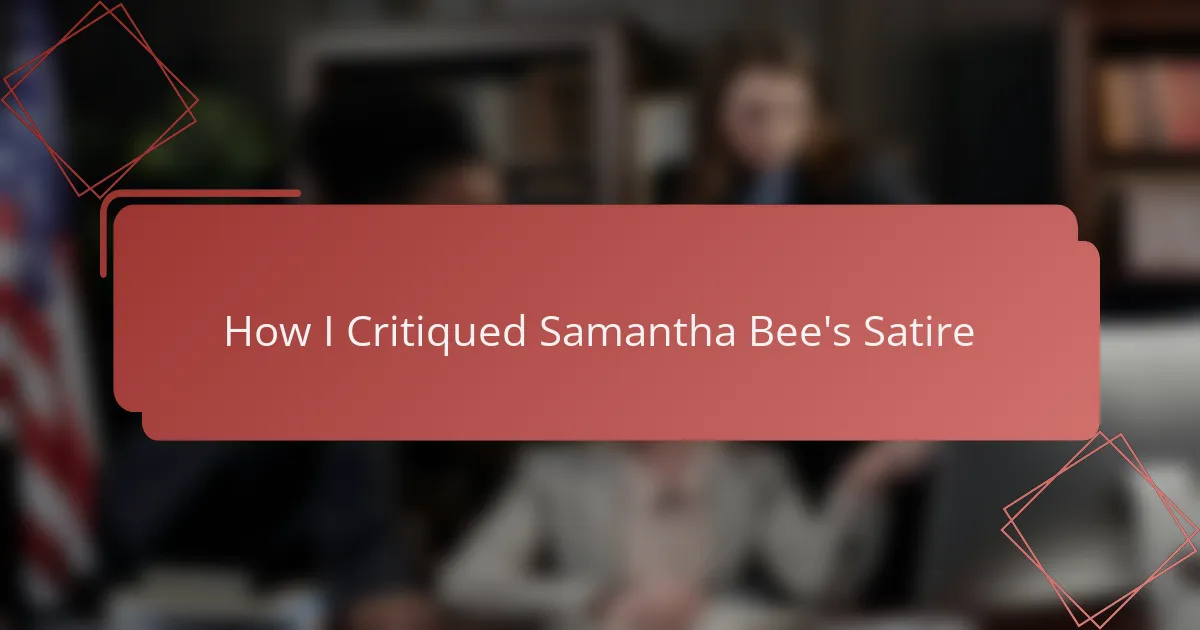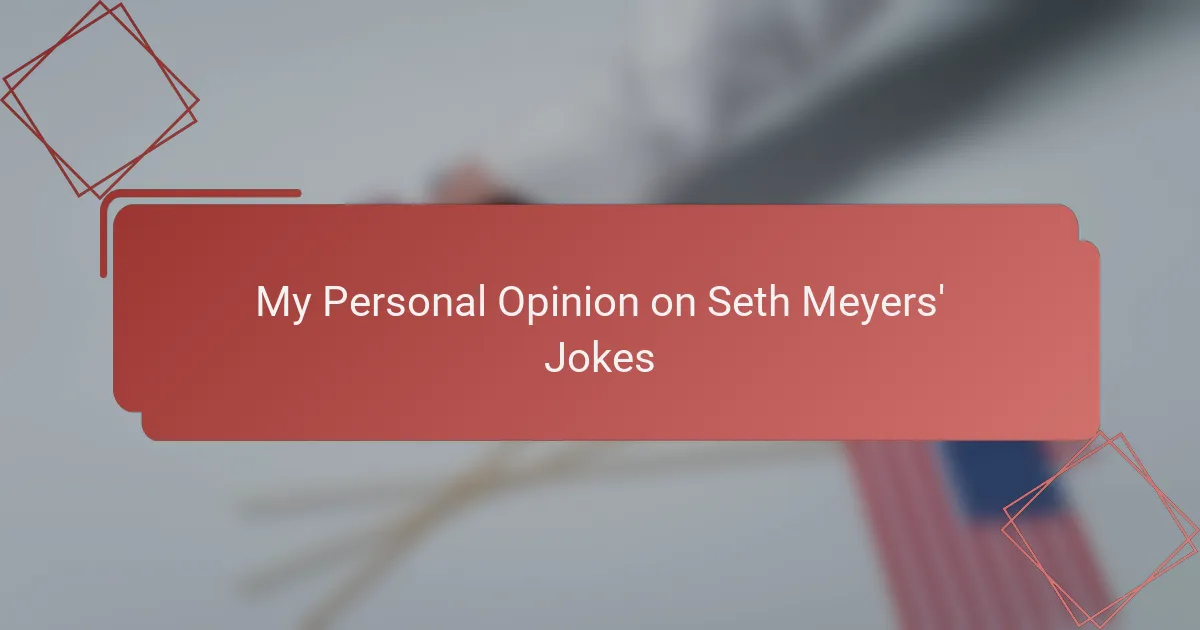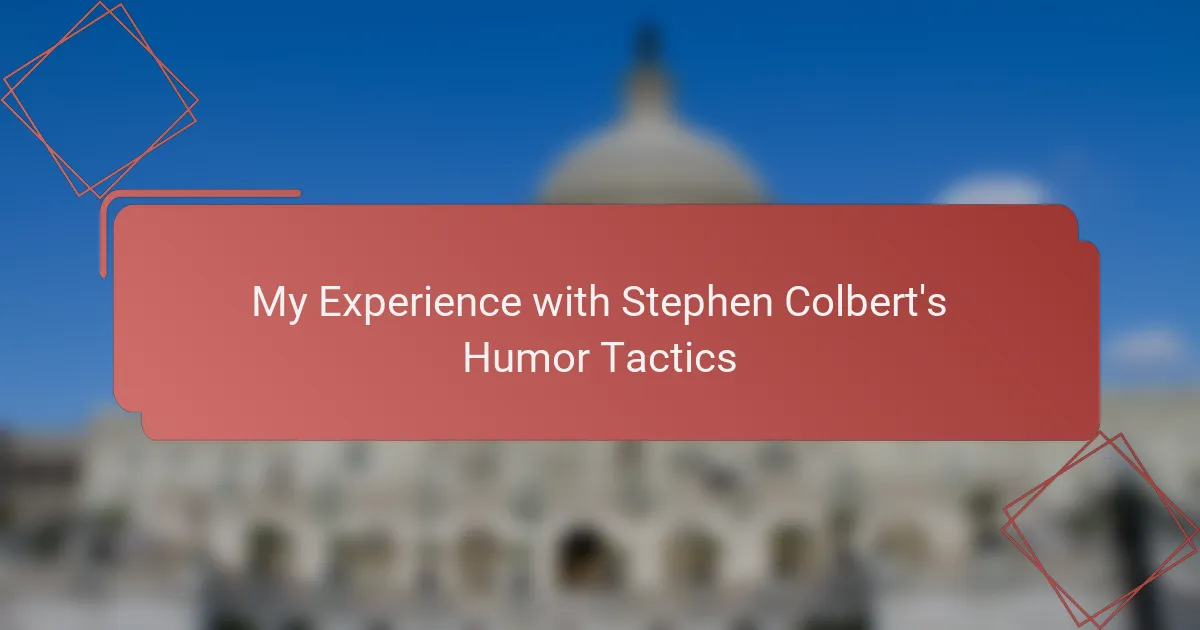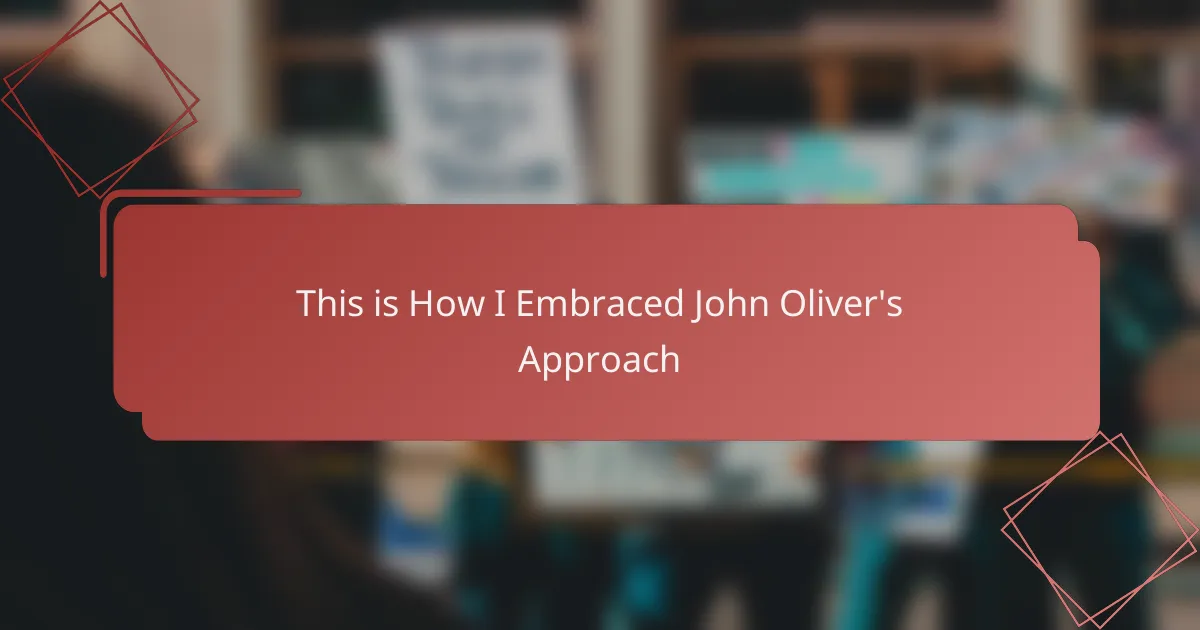Key takeaways
- Political satire balances humor and critique, using exaggeration and irony to provoke thought and engage audiences.
- Samantha Bee’s style is bold and conversational, effectively making complex issues accessible while inviting reflection.
- Effective satire requires a focused target, emotional engagement, and a balance between humor and message to inspire meaningful discussion.
- Critiquing satire emphasizes the importance of understanding the creator’s intent and addressing audience perceptions to avoid alienation.
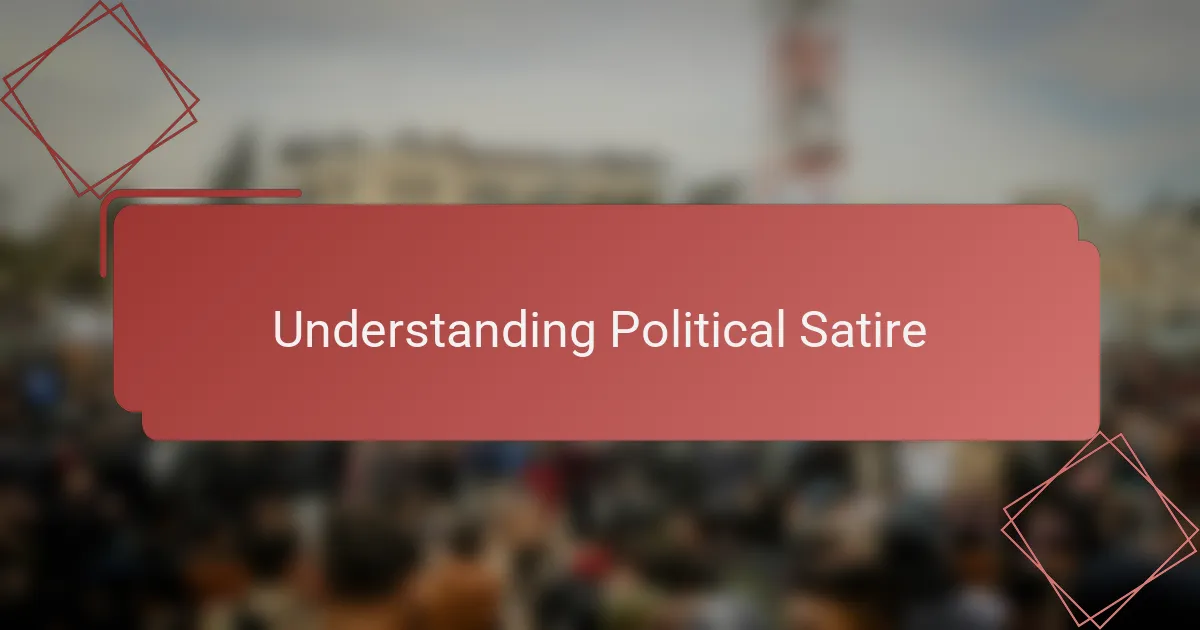
Understanding Political Satire
Political satire walks a fine line between humor and critique, and understanding this balance is crucial. When I first dived into Samantha Bee’s segments, I realized her satire isn’t just about making us laugh; it’s about holding power accountable through sharp wit.
What resonated with me was how satire uses exaggeration and irony to unveil truths we might overlook in everyday news. These techniques often provoke a mix of amusement and discomfort – feelings that I believe signal the satire’s effectiveness.
- Uses humor to critique political figures and policies
- Employs exaggeration and irony to reveal underlying truths
- Sparks reflection by combining entertainment with social commentary
- Creates a space to question authority through relatable storytelling
- Often invokes emotional responses that deepen audience engagement
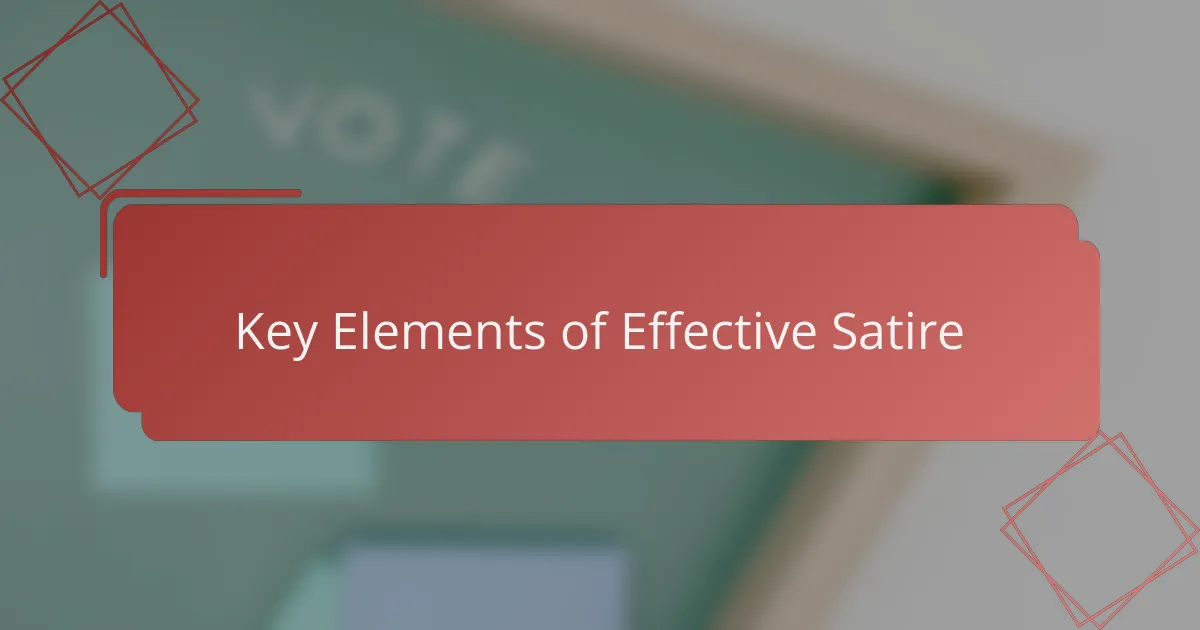
Key Elements of Effective Satire
Effective satire, in my experience critiquing Samantha Bee’s work, relies heavily on sharp wit paired with a clear target. When satire strikes just right, it doesn’t merely entertain; it provokes thought and challenges the audience’s perspectives. I’ve noticed that the most powerful pieces are those where the humor enhances the critique rather than overshadowing it.
From my perspective, the balance between humor and message is delicate but essential. Satire must maintain a sense of urgency and relevance to resonate emotionally, which is something I observed consistently in Samantha Bee’s segments. Here are the key elements I found crucial to effective satire:
- Clear and focused target, ensuring the critique is direct and understandable
- Use of irony and exaggeration to highlight absurdities without losing the underlying truth
- Humor that supports the message, not just for laughs
- Relevance to current political and social issues to engage the audience meaningfully
- Emotional resonance that encourages reflection and discussion beyond the immediate joke
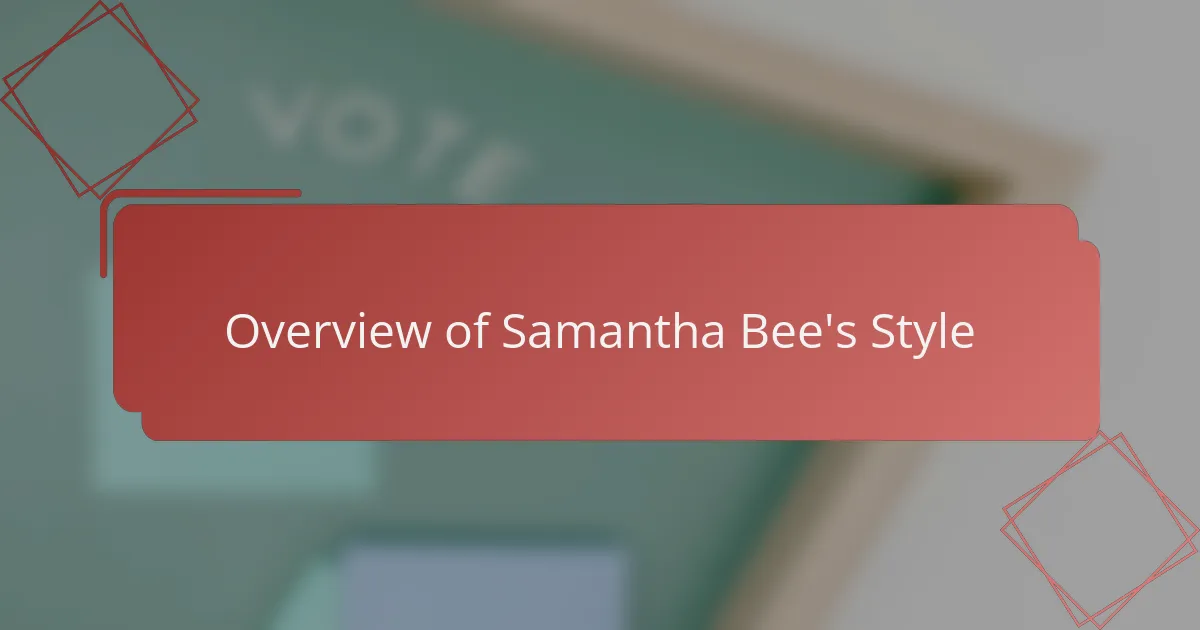
Overview of Samantha Bee’s Style
Samantha Bee’s style is unmistakably bold and unapologetic. Her satire often dives deep into political issues with a sharp wit that both amuses and provokes thought. From my perspective, what sets her apart is how she balances humor with a clear, pointed critique—it’s like she invites you to laugh while making you uncomfortably aware of underlying truths.
Her delivery feels personal, almost conversational, which I find really engaging. It’s not just a monologue; it feels like she’s having a candid discussion with the viewer, making complex political matters more accessible. Reflecting on her approach helped me better appreciate how satire can be both entertaining and educational.
| Aspect | Samantha Bee’s Style |
|---|---|
| Tone | Bold, unapologetic, conversational |
| Focus | Sharp political critique with humor |
| Delivery | Engaging, personal, direct |
| Impact | Provokes thought while entertaining |
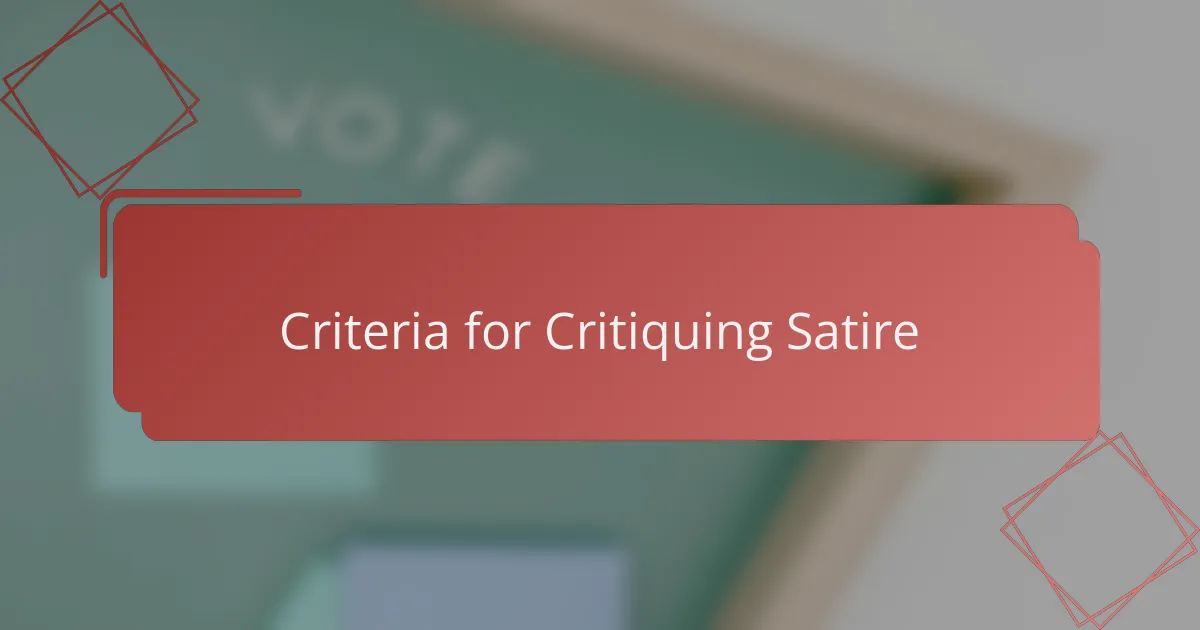
Criteria for Critiquing Satire
When I started critiquing satire like Samantha Bee’s, I quickly saw that having clear criteria is essential; otherwise, it’s easy to get lost in just whether something is funny or not. I asked myself: Does the satire have a focused target, or is it vaguely throwing punches into the void? Pinpointing this felt crucial because satire loses power if it’s not aiming at something specific and meaningful.
Another thing I noticed is the importance of balance between humor and message. Have you ever seen a joke so funny it made you forget what the point was? That happened to me a few times, and I realized that effective satire doesn’t just make you laugh—it makes you think, often uncomfortably so. I kept reminding myself to look beyond the punchline and assess whether the humor actually deepened the critique.
Lastly, I found emotional engagement to be a surprisingly vital standard. Satire should stir something within us, whether it’s outrage, empathy, or even awkwardness. When I watched Samantha Bee, I felt a mixture of amusement and unease, which signaled to me that the satire was doing its job. So, when critiquing, I check: Does this piece connect emotionally enough to inspire reflection or conversation? If yes, then it’s more than just entertainment—it’s impactful satire.
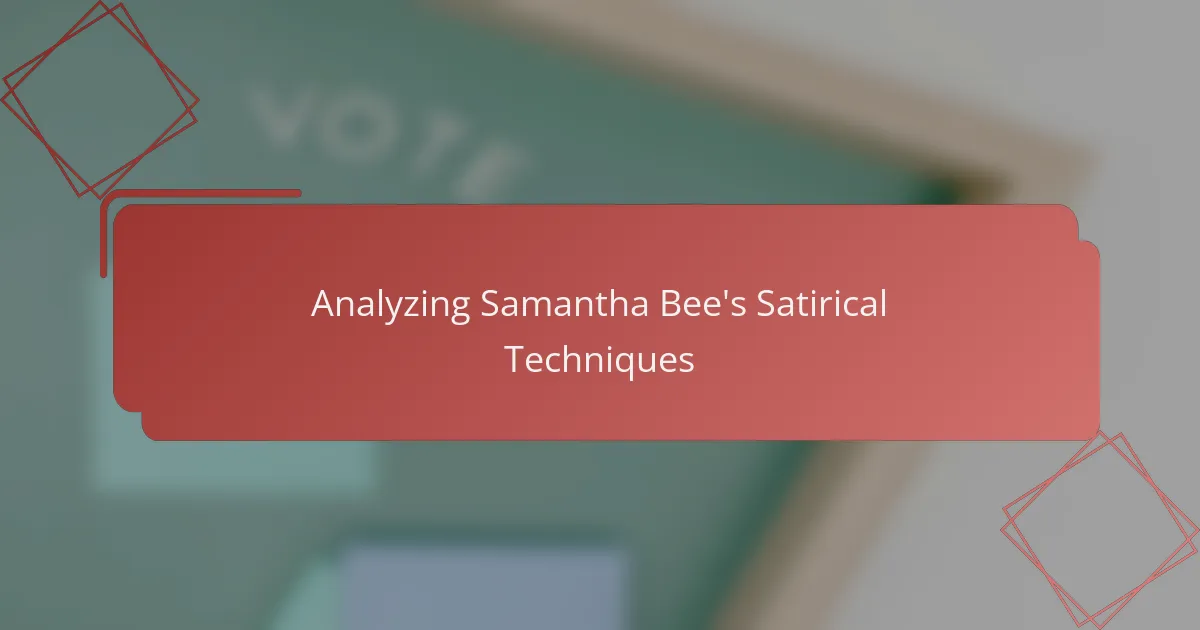
Analyzing Samantha Bee’s Satirical Techniques
Analyzing Samantha Bee’s Satirical Techniques reveals her unique blend of humor and sharp political commentary. I noticed she skillfully employs exaggeration to highlight absurdities, making complex issues more relatable and memorable. In my experience, this approach not only entertains but also provokes thought, encouraging viewers to question mainstream narratives.
| Satirical Technique | Effectiveness & Example |
|---|---|
| Exaggeration | Amplifies political absurdities; for example, her over-the-top impersonations of political figures make serious topics approachable and humorous. |
| Irony | Highlights contradictions in policies or statements, often leaving the audience reflecting on the hypocrisy embedded in politics. |
| Parody | Mimics media formats or political personalities to expose underlying biases or ridiculousness, which I found particularly insightful during coverage of election campaigns. |
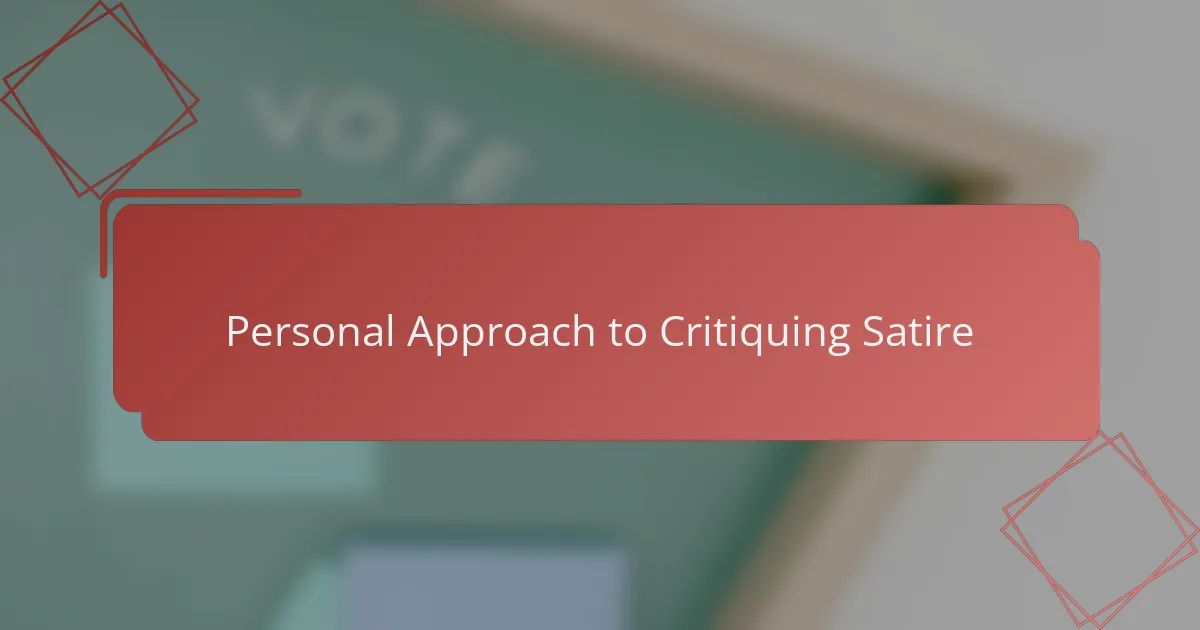
Personal Approach to Critiquing Satire
When I first sat down to critique Samantha Bee’s satire, I approached it not just as a viewer, but as someone who values sharp, purposeful humor. I found that my initial reaction—whether a laugh or a wince—often guided me toward understanding the deeper messages she was conveying. This emotional response became a key tool in dissecting how effectively her satire landed.
To critique thoughtfully, I follow a few personal steps that help me engage with the material beyond surface-level comedy:
– Identify the central message and its political or social context
– Reflect on my emotional response—did it provoke thought, discomfort, or agreement?
– Analyze the balance between humor and critique—did the satire reinforce or undermine its point?
– Consider the audience’s perspective and potential biases
– Compare the satire to other works in the same genre to gauge originality and impact
These steps, drawn from experience, ensure my critique feels both informed and authentic.
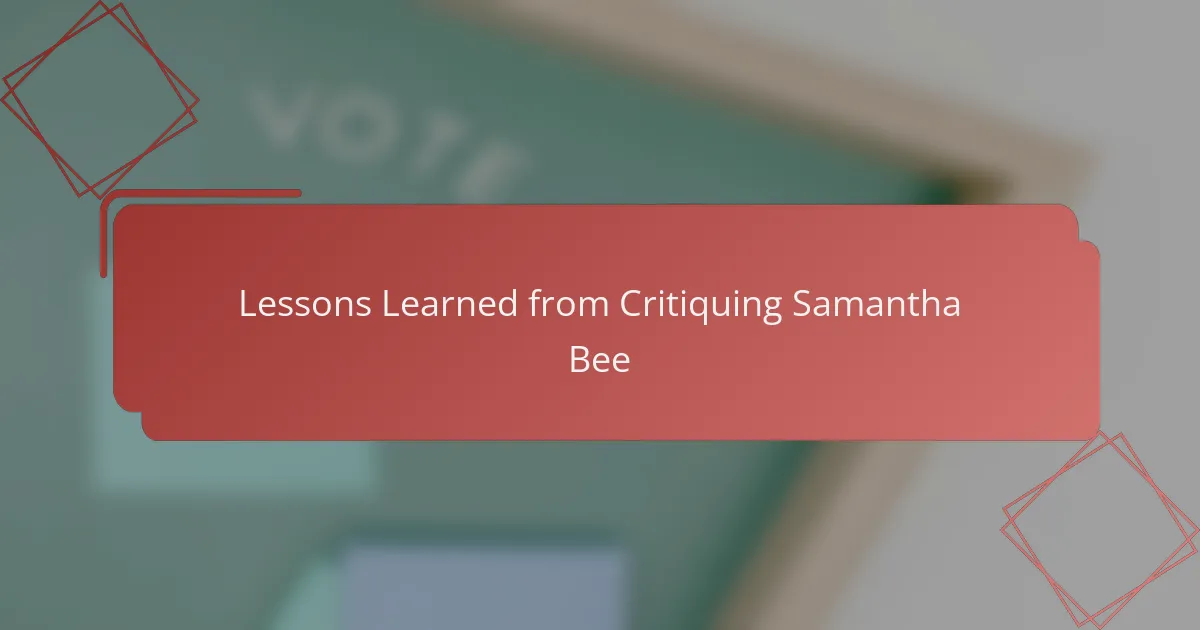
Lessons Learned from Critiquing Samantha Bee
Critiquing Samantha Bee’s satire taught me to appreciate the fine line between humor and offense. I recall feeling torn when one segment struck a nerve personally, which made me realize how vital context and audience perception are in political satire.
This process also highlighted the importance of dissecting underlying messages beyond the comedic surface. Here are some key lessons I took from the experience:
- Satire must balance sharp critique with empathy to avoid alienating viewers.
- Understanding the creator’s intent helps navigate sensitive content.
- Emotional impact varies widely among audiences, making nuance essential.
- Humor can be a powerful tool for political commentary when wielded thoughtfully.
- Effective satire often challenges my own biases, prompting deeper reflection.
